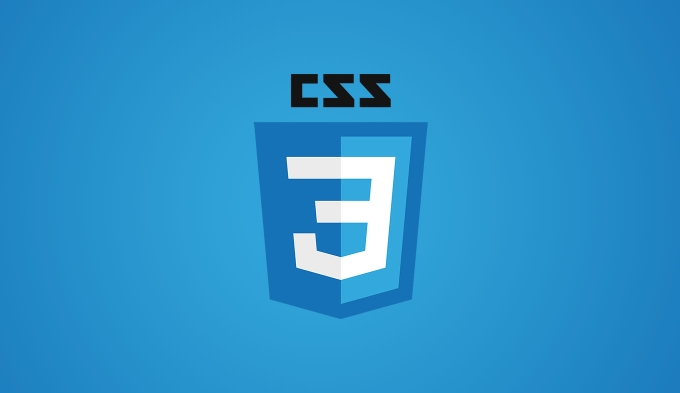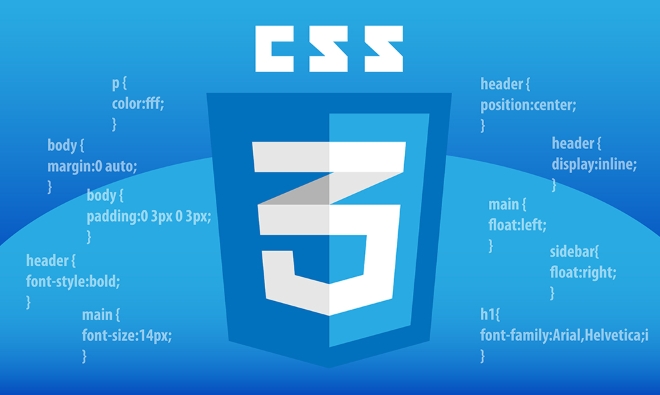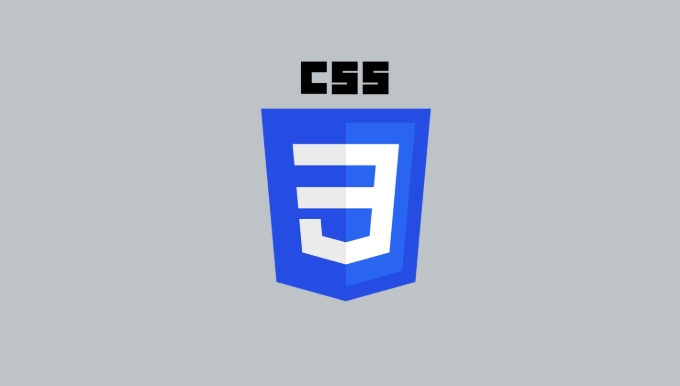CSS' mask-image attribute controls the visible area of the element through pictures or gradients, achieving visual effects such as fading, hollowing, and image cropping. 1. Use mask-image to set the mask image, white display, black hidden, gray translucent; 2. It is recommended to use PNG format, and use mask-repeat and mask-size to control the mask direction and size; 3. Adding the -webkit- prefix to improve browser compatibility; 4. It is often used in scenes such as image fading, text hollowing, dynamic mask transition; 5. Pay attention to the mask image scale, element background settings and Safari compatibility. Mastering the combination of black, white and gray control, compatibility processing and animation can achieve attractive visual effects.

mask-image property of CSS is a very useful but often overlooked tool. It allows you to mask elements with images or gradients, achieving some cool visual effects, such as fading, hollowing, image cropping, etc. If used well, the page can look more refined and improve the interactive experience.

What is mask-image ?
Simply put, mask-image is to set a "mask diagram" for the element, which determines which parts of the element are visible and which are transparent. It works a bit like Photoshop's mask: the white area shows the content, the black area hides the content, and the gray area shows the content as translucent.
It is also very straightforward to use:

.element {
mask-image: url('mask.png');
}You can also use gradients as a mask:
mask-image: linear-gradient(to right, black, white);
How to use mask-image correctly?
To make mask-image work, there are several details that must be noted:

- Image format support : It is best to use PNG format, especially when transparent channels are needed.
- Mask direction : By default, mask according to the size of the picture itself, but you can use
mask-repeat,mask-sizeand other properties to control it. - Browser compatibility : Currently, mainstream browsers support it, but it is best to add
-webkit-prefix to ensure compatibility, especially on mobile:
mask-image: url('mask.png'); -webkit-mask-image: url('mask.png');
Common application scenarios
1. Image fading effect
For example, if you want an image to slowly disappear from left to right, you can use linear gradients as a mask:
.image {
width: 300px;
height: 200px;
background: url('photo.jpg');
mask-image: linear-gradient(to right, transparent, black);
-webkit-mask-image: linear-gradient(to right, transparent, black);
}In this way, the right side of the picture will gradually become transparent, forming a natural transition.
2. Text hollowing effect
Using an image as a mask to make the text turn into a pattern fill effect, which is very common in poster design:
.text {
font-size: 60px;
font-weight: bold;
background: url('pattern.jpg');
-webkit-background-clip: text;
color: transparent;
mask-image: url('text-mask.png');
-webkit-mask-image: url('text-mask.png');
} Note that -webkit-background-clip is used here to make the text only display the background image.
3. Dynamic mask transition
Combined with CSS animation, you can implement dynamic changes in masks, such as the transition from hiding to display:
@keyframes reveal {
0% { mask-image: linear-gradient(to right, transparent 50%, black 50%); }
100% { mask-image: linear-gradient(to right, transparent 0%, black 100%); }
}
.slide {
animation: reveal 2s forwards;
}This effect is often used in image display or loading animations.
Some points that are easy to ignore
- The size of the mask diagram and the proportion of the element itself must match, otherwise it is prone to stretching or cropping.
- When using masks,
backgroundandcolorof the element itself will be affected. It is recommended to usebackgroundto control the display content. - On Safari, some properties must be added with
-webkit-to take effect, such asmask-repeat,mask-position, etc.
Basically that's it. mask-image looks complicated, but in fact, as long as you understand it as a tool to "control the visible area of elements", you can use it flexibly. The uncomplexing but easy to ignore are: the black, white and gray control of mask diagrams, browser compatibility processing and animation combination methods . By mastering these key points, you can achieve many visually attractive effects.
The above is the detailed content of How to use CSS mask-image?. For more information, please follow other related articles on the PHP Chinese website!

Hot AI Tools

Undress AI Tool
Undress images for free

Undresser.AI Undress
AI-powered app for creating realistic nude photos

AI Clothes Remover
Online AI tool for removing clothes from photos.

Clothoff.io
AI clothes remover

Video Face Swap
Swap faces in any video effortlessly with our completely free AI face swap tool!

Hot Article

Hot Tools

Notepad++7.3.1
Easy-to-use and free code editor

SublimeText3 Chinese version
Chinese version, very easy to use

Zend Studio 13.0.1
Powerful PHP integrated development environment

Dreamweaver CS6
Visual web development tools

SublimeText3 Mac version
God-level code editing software (SublimeText3)
 CSS tutorial for creating loading spinners and animations
Jul 07, 2025 am 12:07 AM
CSS tutorial for creating loading spinners and animations
Jul 07, 2025 am 12:07 AM
There are three ways to create a CSS loading rotator: 1. Use the basic rotator of borders to achieve simple animation through HTML and CSS; 2. Use a custom rotator of multiple points to achieve the jump effect through different delay times; 3. Add a rotator in the button and switch classes through JavaScript to display the loading status. Each approach emphasizes the importance of design details such as color, size, accessibility and performance optimization to enhance the user experience.
 Addressing CSS Browser Compatibility issues and prefixes
Jul 07, 2025 am 01:44 AM
Addressing CSS Browser Compatibility issues and prefixes
Jul 07, 2025 am 01:44 AM
To deal with CSS browser compatibility and prefix issues, you need to understand the differences in browser support and use vendor prefixes reasonably. 1. Understand common problems such as Flexbox and Grid support, position:sticky invalid, and animation performance is different; 2. Check CanIuse confirmation feature support status; 3. Correctly use -webkit-, -moz-, -ms-, -o- and other manufacturer prefixes; 4. It is recommended to use Autoprefixer to automatically add prefixes; 5. Install PostCSS and configure browserslist to specify the target browser; 6. Automatically handle compatibility during construction; 7. Modernizr detection features can be used for old projects; 8. No need to pursue consistency of all browsers,
 What is the difference between display: inline, display: block, and display: inline-block?
Jul 11, 2025 am 03:25 AM
What is the difference between display: inline, display: block, and display: inline-block?
Jul 11, 2025 am 03:25 AM
Themaindifferencesbetweendisplay:inline,block,andinline-blockinHTML/CSSarelayoutbehavior,spaceusage,andstylingcontrol.1.Inlineelementsflowwithtext,don’tstartonnewlines,ignorewidth/height,andonlyapplyhorizontalpadding/margins—idealforinlinetextstyling
 Creating custom shapes with css clip-path
Jul 09, 2025 am 01:29 AM
Creating custom shapes with css clip-path
Jul 09, 2025 am 01:29 AM
Use the clip-path attribute of CSS to crop elements into custom shapes, such as triangles, circular notches, polygons, etc., without relying on pictures or SVGs. Its advantages include: 1. Supports a variety of basic shapes such as circle, ellipse, polygon, etc.; 2. Responsive adjustment and adaptable to mobile terminals; 3. Easy to animation, and can be combined with hover or JavaScript to achieve dynamic effects; 4. It does not affect the layout flow, and only crops the display area. Common usages are such as circular clip-path:circle (50pxatcenter) and triangle clip-path:polygon (50%0%, 100 0%, 0 0%). Notice
 Styling visited links differently with CSS
Jul 11, 2025 am 03:26 AM
Styling visited links differently with CSS
Jul 11, 2025 am 03:26 AM
Setting the style of links you have visited can improve the user experience, especially in content-intensive websites to help users navigate better. 1. Use CSS's: visited pseudo-class to define the style of the visited link, such as color changes; 2. Note that the browser only allows modification of some attributes due to privacy restrictions; 3. The color selection should be coordinated with the overall style to avoid abruptness; 4. The mobile terminal may not display this effect, and it is recommended to combine it with other visual prompts such as icon auxiliary logos.
 How to create responsive images using CSS?
Jul 15, 2025 am 01:10 AM
How to create responsive images using CSS?
Jul 15, 2025 am 01:10 AM
To create responsive images using CSS, it can be mainly achieved through the following methods: 1. Use max-width:100% and height:auto to allow the image to adapt to the container width while maintaining the proportion; 2. Use HTML's srcset and sizes attributes to intelligently load the image sources adapted to different screens; 3. Use object-fit and object-position to control image cropping and focus display. Together, these methods ensure that the images are presented clearly and beautifully on different devices.
 Demystifying CSS Units: px, em, rem, vw, vh comparisons
Jul 08, 2025 am 02:16 AM
Demystifying CSS Units: px, em, rem, vw, vh comparisons
Jul 08, 2025 am 02:16 AM
The choice of CSS units depends on design requirements and responsive requirements. 1.px is used for fixed size, suitable for precise control but lack of elasticity; 2.em is a relative unit, which is easily caused by the influence of the parent element, while rem is more stable based on the root element and is suitable for global scaling; 3.vw/vh is based on the viewport size, suitable for responsive design, but attention should be paid to the performance under extreme screens; 4. When choosing, it should be determined based on whether responsive adjustments, element hierarchy relationships and viewport dependence. Reasonable use can improve layout flexibility and maintenance.
 What are common CSS browser inconsistencies?
Jul 26, 2025 am 07:04 AM
What are common CSS browser inconsistencies?
Jul 26, 2025 am 07:04 AM
Different browsers have differences in CSS parsing, resulting in inconsistent display effects, mainly including the default style difference, box model calculation method, Flexbox and Grid layout support level, and inconsistent behavior of certain CSS attributes. 1. The default style processing is inconsistent. The solution is to use CSSReset or Normalize.css to unify the initial style; 2. The box model calculation method of the old version of IE is different. It is recommended to use box-sizing:border-box in a unified manner; 3. Flexbox and Grid perform differently in edge cases or in old versions. More tests and use Autoprefixer; 4. Some CSS attribute behaviors are inconsistent. CanIuse must be consulted and downgraded.






